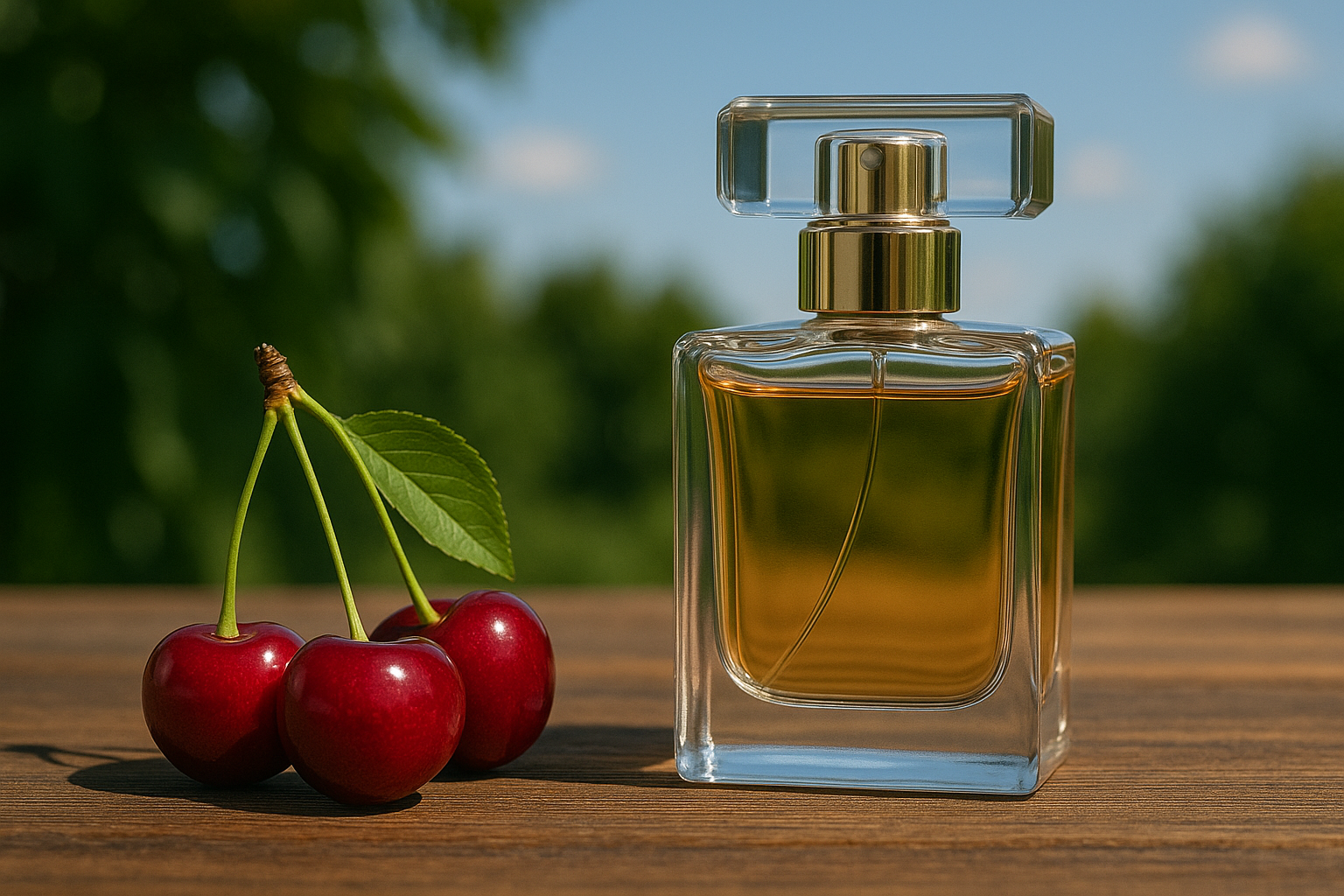Physical Address
304 North Cardinal St.
Dorchester Center, MA 02124
Physical Address
304 North Cardinal St.
Dorchester Center, MA 02124

Few scent notes capture attention quite like cherry. With its irresistible balance of sweetness and tartness, cherry evokes everything from juicy indulgence to sultry sophistication. Whether reminiscent of ripe fruit, cherry liqueur, or even the warmth of baked goods, this note has carved out a unique place in the world of perfumery. While not commonly derived from natural cherry oil due to extraction challenges, cherry-inspired accords have become a beloved ingredient in both mainstream and niche fragrances.
In this guide, we’ll explore what makes cherry such a fascinating and versatile scent note, how it’s used in modern perfumery, and which fragrance pairings bring out its most captivating sides.
Cherry has a rich, multi-layered scent profile that blends sweetness, tartness, and subtle warmth. In perfumery, the smell of cherry is typically synthetic but highly evocative, offering different facets depending on how it’s used and what it’s paired with.
Here’s a breakdown of what cherry smells like in perfumes:
The overall impression depends on whether the cherry is showcased in a gourmand, fruity, floral, or dark woody context — making it one of the most adaptable and expressive fruity notes in modern perfumery.
Not all cherry notes in perfumery are created equal. Perfumers use different styles of cherry accords to evoke specific moods, from light and playful to dark and mysterious. Understanding the variations helps explain why some cherry perfumes feel like candy while others exude a boozy, sensual warmth.
Sour cherry is bright, tangy, and sharp — capturing the essence of just-ripened fruit with a slightly acidic bite. This version of cherry is commonly used in:
Sour cherry is lively and refreshing, often giving perfumes an energetic, flirty character.
Black cherry is richer, darker, and more indulgent. It leans toward boozy and syrupy, often evoking cherry liqueur or jam. This type of cherry works well in:
Black cherry feels luxurious and deep — ideal for creating a bold, sensual impression.
It’s important to note that cherry blossom is a separate fragrance note altogether. While often associated with light floral perfumes, cherry blossom carries a soft, airy, and almost watery floral tone — completely different from the juicy fruitiness of cherry.
Cherry is a highly versatile note that can shape-shift depending on its context. Whether used as a playful top note or a deep heart note, it adapts to different fragrance styles — from bright fruity compositions to darker, more seductive blends.
In gourmand perfumes, cherry is often paired with notes like:
This combination creates a dessert-like, edible impression — think cherry pie, black forest cake, or cherry truffle. These perfumes are rich, sweet, and often comforting.
When combined with floral notes, cherry takes on a more romantic or flirty tone. Common floral pairings include:
These blends often feel airy and approachable — ideal for spring or daytime wear.
This style emphasizes cherry’s deeper, boozier side and works beautifully with:
It results in a bold, complex fragrance that’s mysterious and sensual, often suited for evening or colder seasons.
Cherry also excels in layering, especially with:
Whether you’re crafting your own scent profile or selecting a well-blended perfume, cherry’s pairings play a key role in how the final fragrance feels.
Cherry has inspired a number of standout fragrances in both designer and niche perfumery. From playful sweetness to sultry sophistication, here are some of the most celebrated cherry-forward scents:
Cherry fragrances can make a bold impression — but their versatility also allows them to fit a wide range of moods and occasions. Whether you’re drawn to playful sweetness or deeper sensuality, cherry has a lot to offer. Here’s how to know if it’s right for you:
You might enjoy cherry-based perfumes if you:
Cherry perfumes can be nostalgic and comforting, or daring and seductive — making them especially appealing to those who like contrast in their scent wardrobe.
Cherry may not be for those who prefer ultra-fresh, green, or aquatic scents — but for lovers of richness, warmth, and personality, it’s a standout.
No — real cherry oil is not commonly used in perfumery because cherry fruits do not produce essential oils through traditional extraction methods. Instead, perfumers use synthetic molecules and accords to recreate the scent of cherry.
Cherry is most often used as a top or heart note. It typically opens a fragrance with its juicy, sweet, or tart character but can linger into the heart phase depending on the formulation. When blended with heavier notes like tonka or amber, it may feel deeper.
Some cherry fragrances use specific synthetic compounds (like benzaldehyde or cherry liqueur notes) that can mimic the scent of medicinal cherry flavoring. This resemblance is usually more pronounced in simpler or overly sweet cherry compositions.
Cherry is a volatile note, meaning it often fades faster than base notes. On its own, it may only last 1–2 hours, but in well-composed fragrances, it’s anchored by other ingredients (like woods, spices, or resins) to extend its longevity.
Yes — but with variations. Sour cherry and fruity-florals are ideal for warmer months, while black cherry or boozy cherry notes work beautifully in fall and winter. The versatility of cherry makes it adaptable with the right supporting notes.